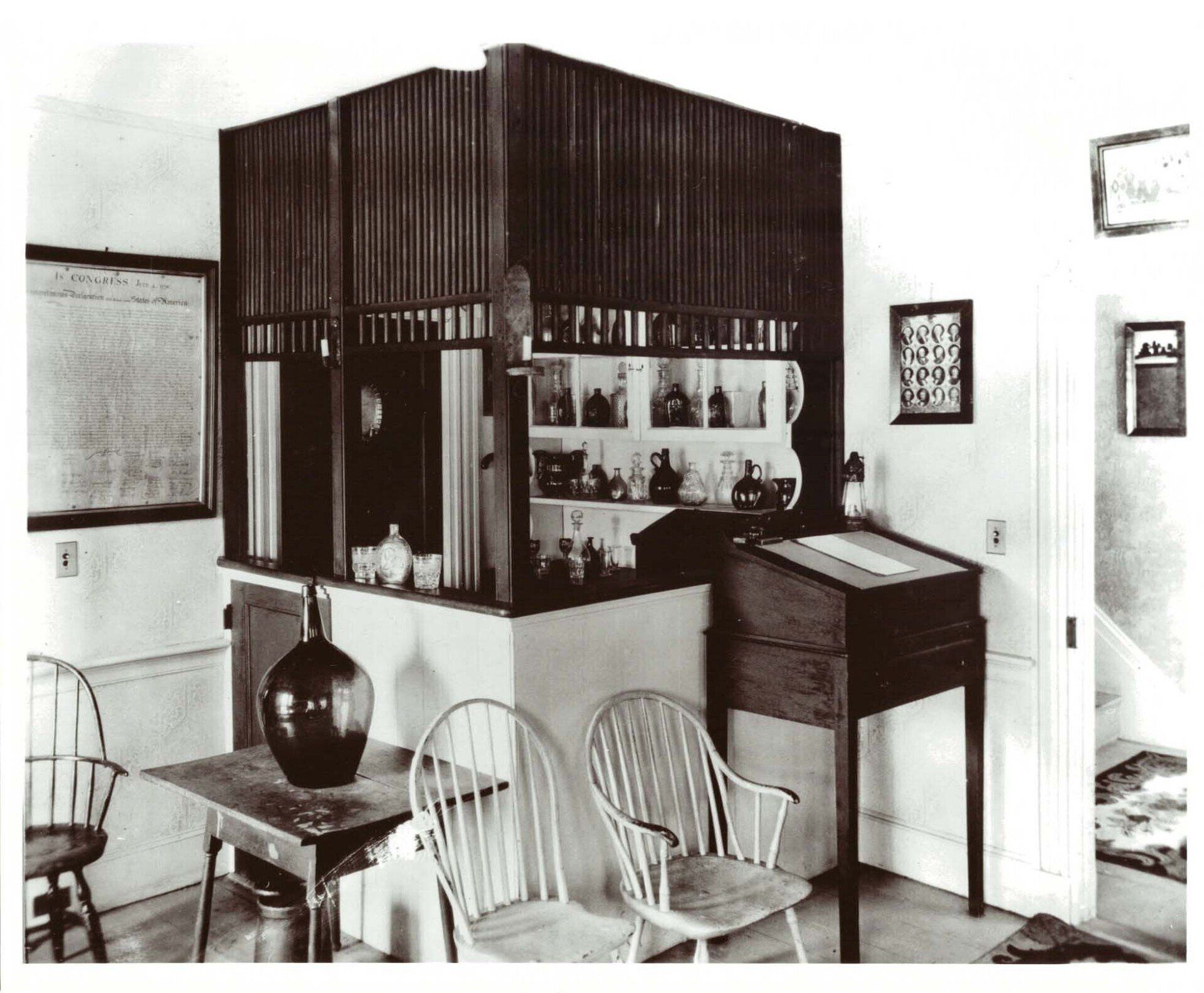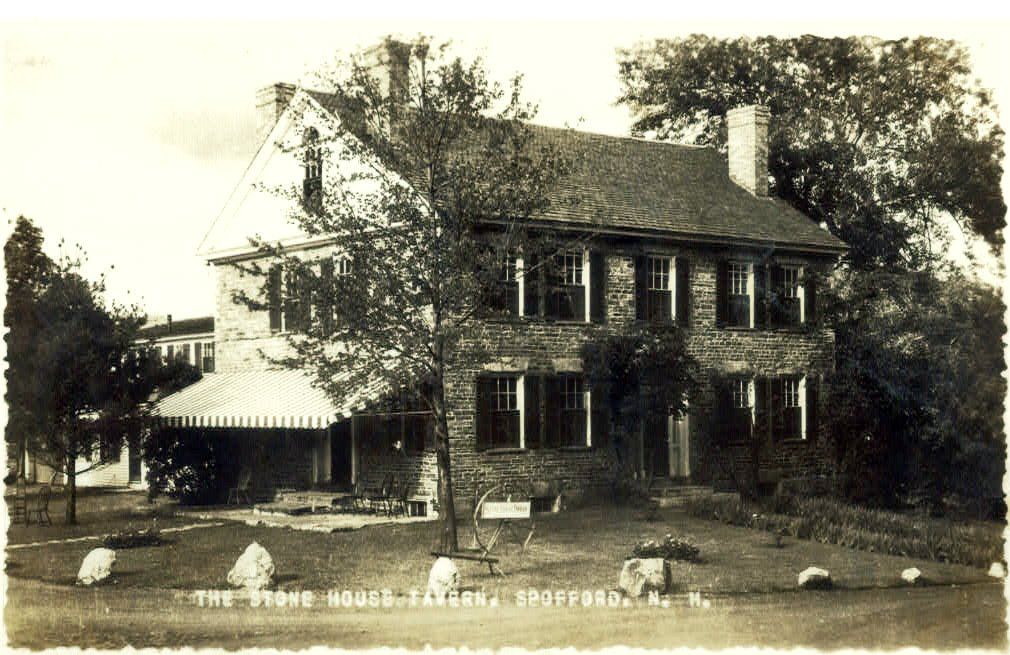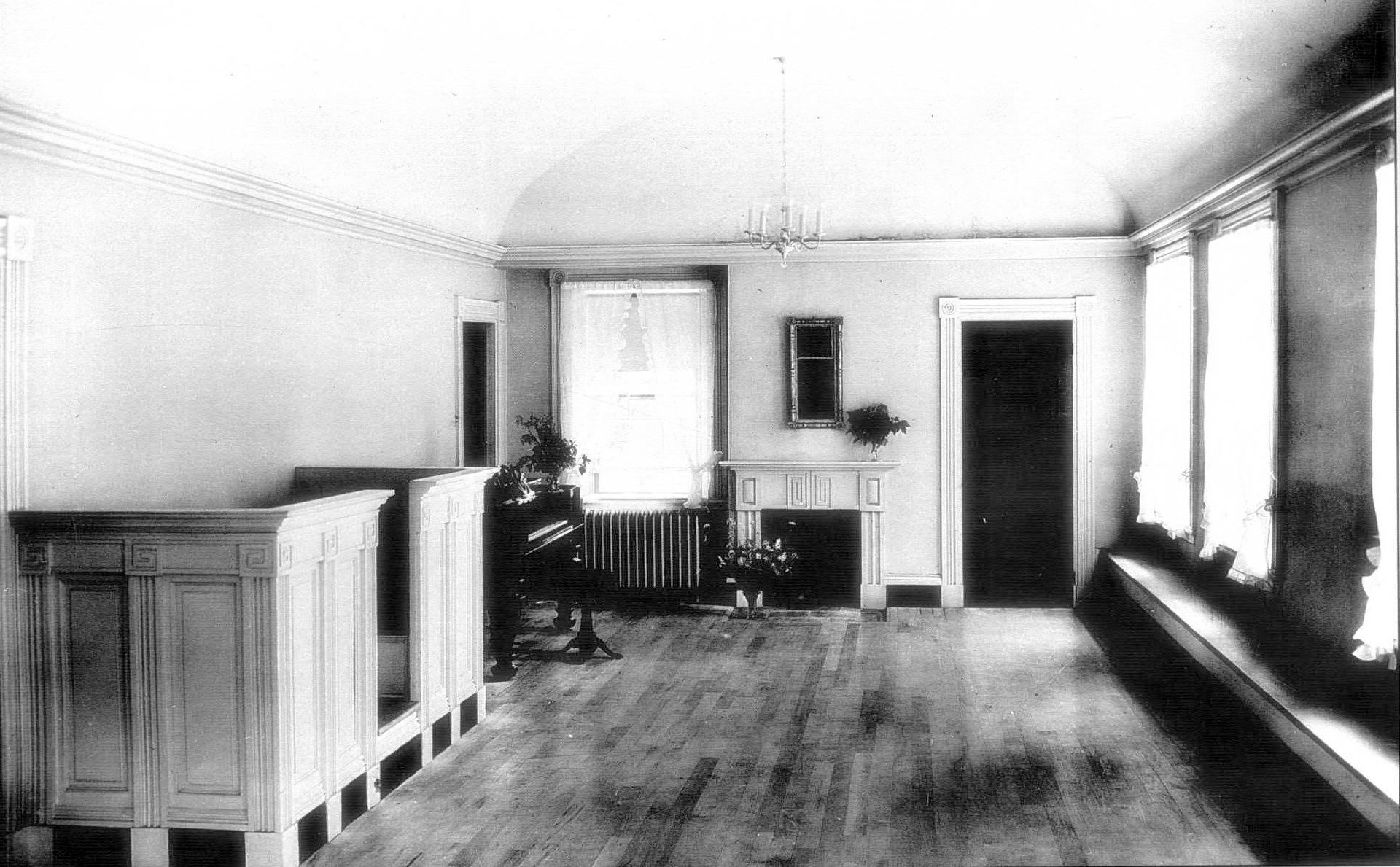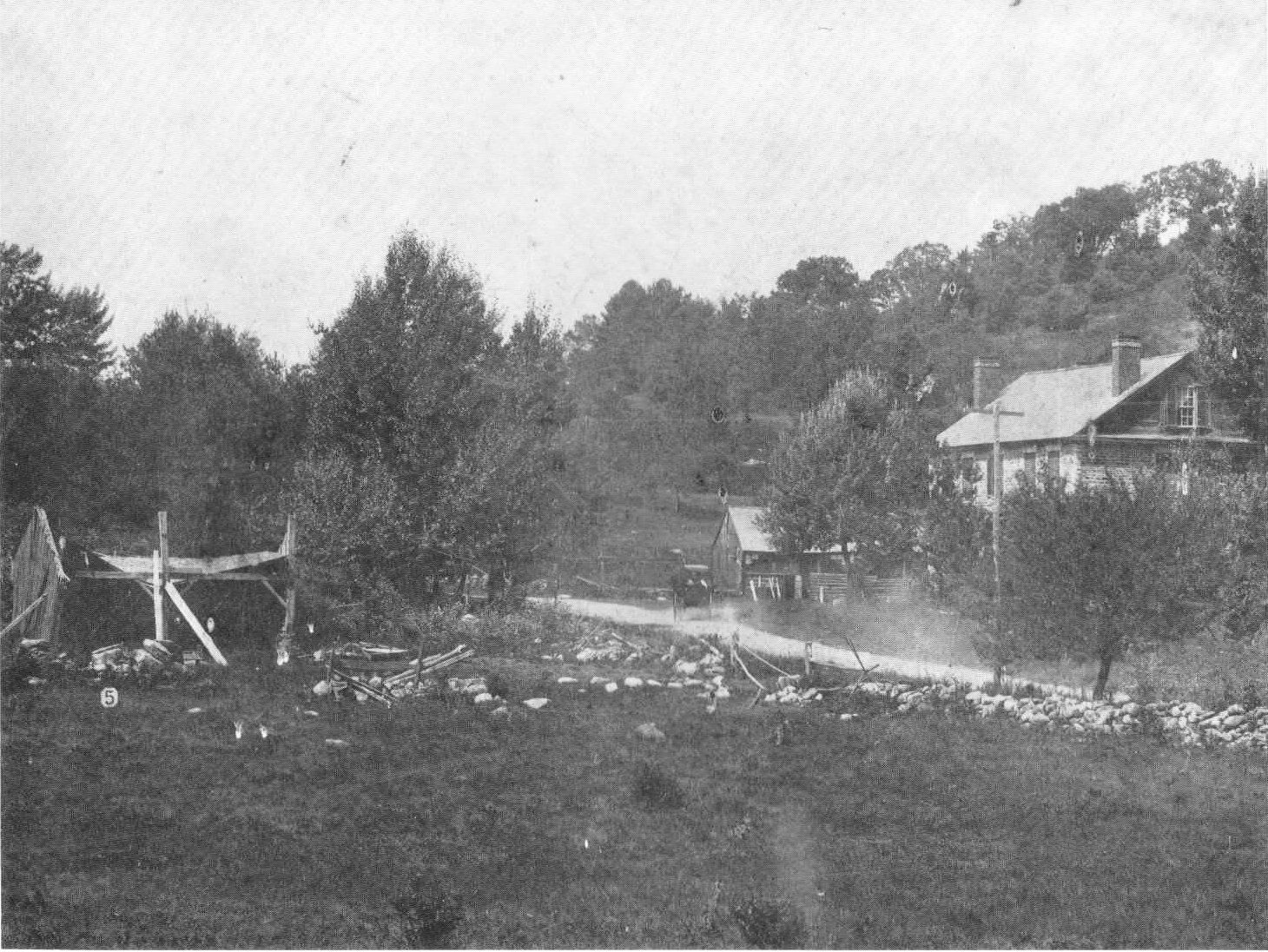The Stone House Tavern History
(Included in this section are Historical Pictures and WMUR's "The New Hampshire Chronicle" feature about Lake Spofford and how Ezekiel Pierce, builder of the Stone House Tavern, was first in making it into a popular tourist destination.)
The Stone House story begins with John Pierce (1743 – 1812) who came to Chesterfield sometime between 1770 and 1776. According to tradition, he was a veteran of the French and Indian Wars. Upon arrival in Chesterfield, he opened up a store in Center Village and started acquiring land. An ardent Patriot, he donated a large tract of land to “The Cause” and participated in the Battle of Bennington in 1777. In 1782, he purchased lot No. 12 on the western half of Lake Spafford (Lake Spofford), where he built a wooden home in 1790. Over the years, he enlarged it to accommodate his growing family.
After John’s death in 1812, his 4th son Ezekiel Porter Pierce (April 20, 1785 – May 23, 1865) eventually bought out his siblings for $500, and took control of the original family homestead. Ezekiel had returned from Maine in 1814 where he was mastering the carpentry trade. Once back in Chesterfield, he ran a store and tavern in the Village Center. He was also involved in manufacturing of bits and augers. In about 1820, he became involved in the making “Miners' Patent Accelerating Wheel-heads” for spinning wool in both Factory Village (now Spofford) and in Londonderry, VT. He was one of the first in the area to do this. However he had to delay their manufacturing due to patent infringement problems.
Always interested in town affairs, he became a Selectman and was elected to the NH House of Representative. He used his standing in the community to promote temperance and abolition. It was said, he was eternally grateful that he lived to see the defeat of the Southern States.
In 1831, using his skills in carpentry, jointing and drafting, Ezekiel added a 2 ½ story stone house onto the original Pierce family homestead. Always the entrepreneur, he took advantage of its location at the intersection of two main roads, and ran it as a tavern and stagecoach stop. He named the tavern “The Temperance Lake House”. Because of the Pierce family’s stand on abolition, it has been rumored that it was part of the Underground Railroad, using space behind the old fireplace to hide runaway slaves. This can not be proven. However, facts do support that it was a popular place for locals to gather, get news, hold militia gatherings, and social events, especially dances in the upstairs ballroom.
Because Spafford lake was the closest lake to the Brattleboro railway station, the Temperance Lake Tavern became a popular spot for tourist traveling to get away for city life. The property's lakeside location allowed for Pierce to provide amusements in the form of a sailboat and four rowboats. His youngest son, Benjamin is noted to be the first successful navigator of Spafford’s Lake, having sailed it for about ten years without a "noteworthy accident".
In 1860, he refitted the sloop-rigged sailboat with a zinc bottom making it watertight. Then, he engaged the services of the experienced Capt. Romeo Bowen to sail it for "Pic-nic and Fishing Parties". The boat held 50 passengers and sailed everyday except Sundays. (After the Civil War, the lake became more popular and eventually hosted a steamboat.)
(With permission from WMUR, Fritz Wetherbee explains how the Temperance Lake House
opened the way for Spofford Lake Tourism.)
Ezekiel Pierce’s died on May 23,1865, leaving the majority of his estate to his two daughters, Augusta “Gusty” (1830 – 1917) and Theresa Jane (1812 – 1890) Pierce. Both were unmarried school teachers who taught in various locations around Vermont, Massachusetts, and New Hampshire. They both retired to their ancestral home. Gusty is remembered as an outspoken participant in town and school meetings. According to town records, she was the first woman to speak at a town meeting. She too was an ardent supporter of abolition and temperance.
However, their younger brother Benjamin F. (1833 - 1913) was running the tavern. He had a liquor licensed issued for it on June 21, 1865 and renamed it “The Lake House” or the "Lake View House". Besides being a standard stagecoach stop, it started catering more to tourists who came to enjoy the activities on Spafford Lake (later called Spofford lake). At the time, their property extended all the way into the lake, including what is now Pierce Island State Park.
Gusty died in 1917, the last of the ten Pierce siblings. After her death, the Pierce homestead was auctioned off and passed out of the family. It changed hands again and in 1923, was purchased by Morris Friedsam, a prominent Chesterfield resident. Friedsam updated it with central heating and partial electricity. He also added dormers to the original wooden structure, and fixed the porch, the original kitchen fireplace and chimneys.
He operated it as a tea room, restaurant, and inn. In a portion of it, he ran an antique and reproduction shop. He renamed it "The Stone House Antiques". On the first floor, in what is thought to be the stagecoach entrance, Friedsam added a “Barkeeper’s Cage”, an enclosed wooden cage-like structure with a wooden lattice top. A section of the lattice work can be raised or lowered to permit the serving of beverages. Spirits were kept on shelves that line the lower insides. The cash drawer is still workable.
Below are Friedsam Era Photos
After Friedsam’s death, Gordon Chamberlain purchased the property and used it as a residence, antique shop and inn from 1953 to his death in the late 1980s. In 1990, the building was purchased via auction and rented as an antique shop. Unfortunately, it was periodically vacant. With the downturn of the economy, the owners found it difficult to resell. They even reverted to creative selling techniques. It was offered it as a prize in a failed essay contest and also to CHS, but the price was much too high.
Eventually, Constantine “Deeko” Broutsas purchased it in 1995. With care taken to its original features, he renovated it, and used it as a shop to sell antiques, rare books, and fine art. Deeko, who has since passed, generously offered the complex to the Chesterfield Historical Society which purchased it in April 2018.
Through the diligent of its past and present owners, the 1831 stone addition has survived the past 190 years with much of its original features. It was electrified and had modern plumbing, heating, and cooling systems installed. But, the original delicate woodworking details, soapstone fireplaces, plaster walls, ballroom, and attic accommodations have been retained, giving it significant historical value. This is what the Chesterfield Historical Society is striving to preserve
During the later part of the 20C, much of the original lot size which extended to Pierce Isand was greatly reduced through property transfers and expansion of the intersection. Now, it is just .95 acres. The original wooden portion of the Pierce homestead was converted into two apartments.
In 2018, CHS was able to place it on the State Historical Register. Starting in the summer of 2025, it will be open to the public to display CHS enormous collections. It will feature, educational programs focusing on Chesterfield’s agricultural, manufacturing, and lake resort past, and the people who made it all happen. To know one’s past is to have a firm grip on one’s future. Once the past is forgotten, one is doomed to continue to repeat it, mistakes and all.





















